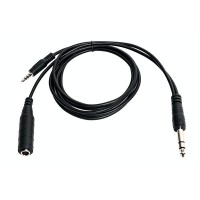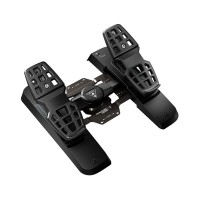Wright Flyer Kitty Hawk Model 1/32
MFR Model# ESAG024
Overview
|
This high quality replica is handcrafted from mahogany and comes with a wooden base. Length is 8" and wingspan is 15 3/8". Scale is 1/32. The Wright Flyer (often retrospectively referred to as Flyer I and occasionally Kitty Hawk) was the first powered aircraft designed and built by the Wright brothers. It was the first successful powered, piloted, controlled heavier-than-air aircraft. The Wright Flyer was a canard biplane configuration. The Wright Flyer was based on the Wrights' experience testing gliders at Kitty Hawk between 1900 and 1902. The Wrights built the aircraft in 1903 using 'giant spruce' wood as their construction material. Since they could find no suitable automobile engine for the task, they commissioned their employee Charlie Taylor to build a new design from scratch. A sprocket chain drive, borrowing from bicycle technology, powered the twin propellers, which were also made by hand. In 1904, the Wrights continued refining their designs and piloting techniques in order to obtain fully controlled flight. Major progress toward this goal was achieved in 1904 and even more decisively with the modifications during the 1905 program, which resulted in a 39-minute, 24 mile nonstop circling flight by Wilbur on October 5. While the 1903 Flyer was clearly a historically important test vehicle, its near-mythical status in American imagination has obscured its place as part of a continuing development program that eventually led to the Wrights' mastery of controlled flight in 1905. In 1910 the Wrights first made attempts to exhibit the Flyer in the Smithsonian Institution but talks fell through with the ensuing lawsuits against Glenn Curtiss and the Flyer may have been needed as repeated evidence in court cases. In 1916, Orville brought the Flyer out of storage and prepared it for display at the Massachusetts Institute of Technology. (Wilbur had died in 1912.) He replaced parts of the covering, the props, and the engine's crankcase, crankshaft, and flywheel. The crankcase, crankshaft and flywheel had been sent to the Aero Club of America for an exhibit in 1906 and were never returned to the Wrights. A number of individuals and groups have attempted to build reproductions of the Wright Flyer for demonstration or scientific purposes. |
WARNING: Cancer and Reproductive Harm - www.P65Warnings.ca.gov. |
Q&A
Please note, Aircraft Spruce ®'s personnel are not certified aircraft mechanics and can only provide general support and ideas, which should not be relied upon or implemented in lieu of consulting an A&P or other qualified technician. Aircraft Spruce ® assumes no responsibility or liability for any issue or problem which may arise from any repair, modification or other work done from this knowledge base. Any product eligibility information provided here is based on general application guides and we recommend always referring to your specific aircraft parts manual, the parts manufacturer or consulting with a qualified mechanic.
This high quality replica is handcrafted from mahogany and comes with a wooden base. Length is 8" and wingspan is 15 3/8". Scale is 1/32.








 FREE Shipping
FREE Shipping






